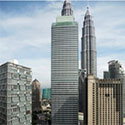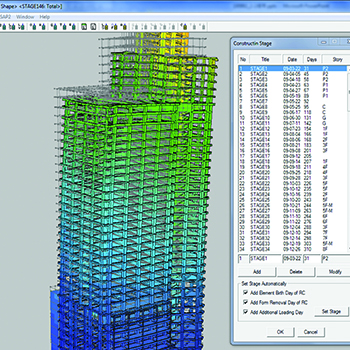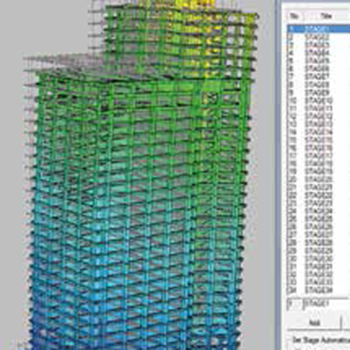Taehun Ha
Individuals, Chief Research Engineer | Seoul, South Korea
About
Taehun Ha is Chief Research Engineer at Architectural Engineering Research Team of Daewoo E&C, Seoul, South Korea. He received his BS, MS, and Ph.D. from the Department of Architecture, Seoul National University, Seoul, South Korea in 1997, 1999, and 2004, respectively. Since he joined Daewoo E&C, he carried out many types of research on the long-termed movement of high-rise buildings and developed in-house software for construction stage analysis. The software has been used in more than thirty actual high-rise projects to predict their movements and take corrective measures during construction

CTBUH Roles
Annual Conference, Presenter (Chicago 2019)
Awards Construction Jury (Chair 2022; Chair 2023)
Annual Conference, Poster Presenter, Middle East (2018)
Research

01 March 2017
Prediction of Time-dependent Lateral Movement Induced by Differential Shortening in Tall Buildings
Taehun Ha & Sungho Lee, Daewoo E&C; Sangdae Kim, Korea University
High-rise buildings move during construction due to time-dependent material properties of concrete (creep and shrinkage), construction sequences, and structural shapes. The building movements, including vertical...
You must be a CTBUH Member to view this resource.
Research

01 August 2016
A Software Tool for the Analysis of Time-Dependent Effects in High-Rise Buildings
Carlo Casalegno, IUAV University of Venice; Mario Alberto Chiorino, Politecnico di Torino; Taehun Ha & Sungho Lee, Daewoo Engineering and Construction
Increased use of concrete in high-rise buildings has made these structures especially sensitive to delayed deformations due to concrete’s natural tendency to creep and shrink....
You must be a CTBUH Member to view this resource.
Research

26 October 2015
Case Study of Structural Cracks in Irregular RC Tall Building During Construction
Dr. Taehun Ha & Sungho Lee, Daewoo E&C
Structural cracks happen during construction of RC buildings due to various reasons but they are more often considered as construction faults rather than being considered...
You must be a CTBUH Member to view this resource.
Research

01 March 2017
Prediction of Time-dependent Lateral Movement Induced by Differential Shortening in Tall Buildings
Taehun Ha & Sungho Lee, Daewoo E&C; Sangdae Kim, Korea University
High-rise buildings move during construction due to time-dependent material properties of concrete (creep and shrinkage), construction sequences, and structural shapes. The building movements, including vertical...

01 August 2016
A Software Tool for the Analysis of Time-Dependent Effects in High-Rise Buildings
Carlo Casalegno, IUAV University of Venice; Mario Alberto Chiorino, Politecnico di Torino; Taehun Ha & Sungho Lee, Daewoo Engineering and Construction
Increased use of concrete in high-rise buildings has made these structures especially sensitive to delayed deformations due to concrete’s natural tendency to creep and shrink....

26 October 2015
Case Study of Structural Cracks in Irregular RC Tall Building During Construction
Dr. Taehun Ha & Sungho Lee, Daewoo E&C
Structural cracks happen during construction of RC buildings due to various reasons but they are more often considered as construction faults rather than being considered...

19 September 2012
Evaluation of Building Movement Using 3D Laser Scanning
Sung-Ho Lee & Taehun Ha, Architectural Engineering Research Team, Daewoo E&C
High-rise buildings move during construction due to time-dependent material properties of concrete (creep and shrinkage), construction sequences, and structural shapes. To control building movements during...
Get the Latest News and Updates from CTBUH
Fields with an asterisk (*) next to them are required.
View our privacy policy
